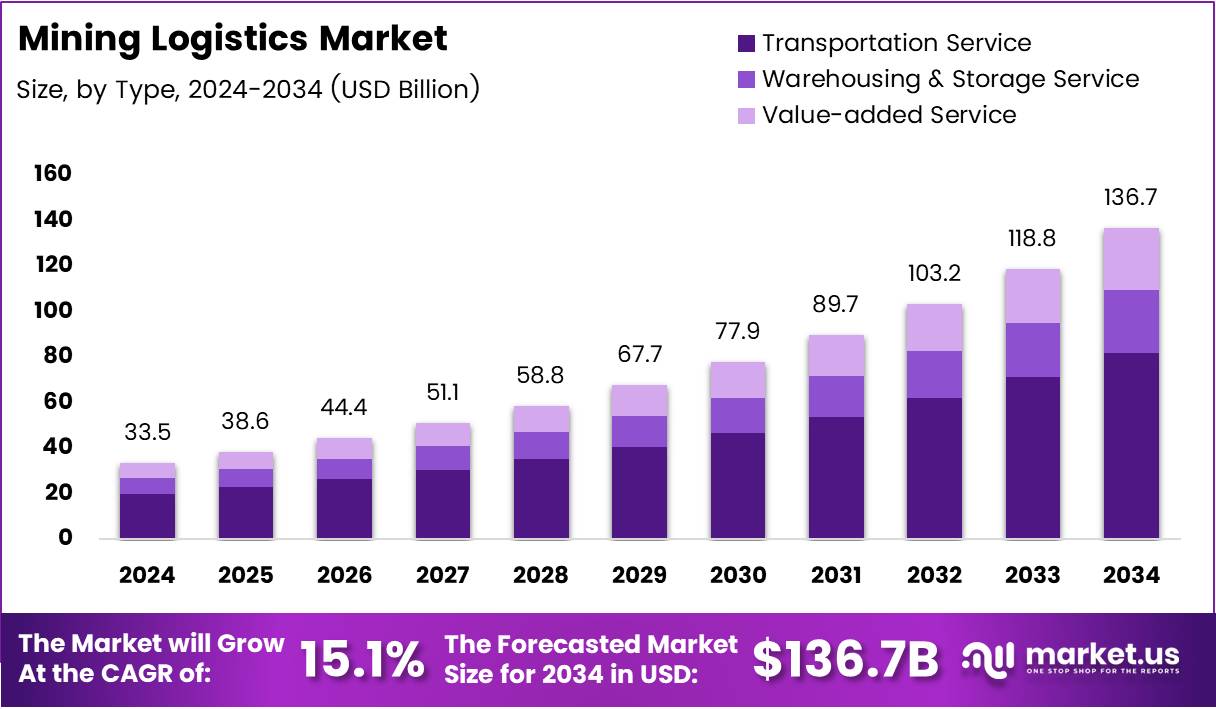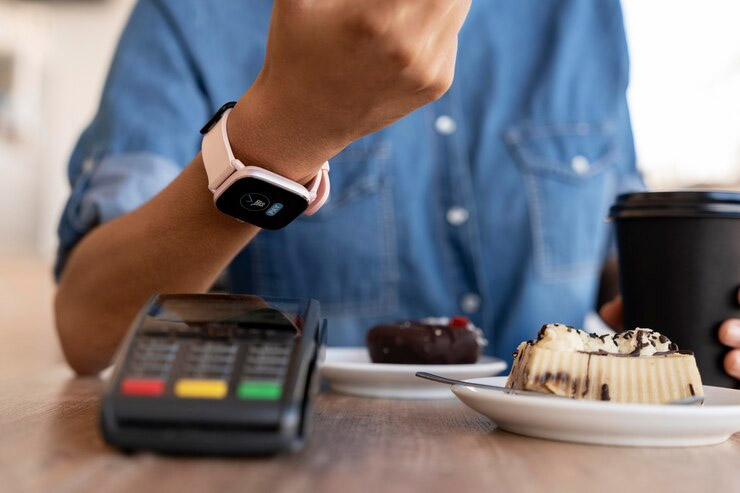Che cosa sta accadendo? – Quando hai in mano il tuo smartphone (o tablet) e sullo schermo del tuo device (dispositivo) compaiono queste icone e le relative indicazioni – Ti sei mai chiesto che cosa è costretto a subire il tuo organismo? / Credo proprio di no. Altrimenti avresti consapevolezza dell’entità del rischio per la tua salute. / Si chiama “Danno Biologico da esposizione ai Campi Elettromagnetici” artificiali.
Ora, vediamo assieme quali sono le informazioni che compaiono davanti ai tuoi occhi ma che sino ad ora non hai mai dato l’attenzione che meritano.
Sono le “16:46” – l’ora esatta che ti arriva direttamente da un “cloud” inviato da un satellite. Questo significa che il tuo dispositivo è geolocalizzato, quindi può ricevere il segnale ed è interconnesso con la rete.
La seconda icona indica che il vostro “bluetooth” è in funzione. Questo sta ad indicare che il vostro organismo è immerso nelle radiazioni elettromagnetiche della Banda dei 2,4 GHz. Il Sistema Bluetooth è quella tecnologia che permette il trasferimento di dati digitali senza l’ausilio di connessioni fisiche (cablaggio ad es. mediante filo di rame). Lo si utilizza per collegare i dispositivi wireless (senza filo).
La terza icona indica la vostra SIM 1 è in funzione e il vostro segnale di rice/trasmissione è al massimo.
La SIM è una piccola scheda che viene inserita in uno smartphone, un modem portatile oppure un dispositivo compatibile, in modo da permettere la fornitura di diversi servizi. La SIM (Subscriber Identity Module) serve a riconoscere l’identità di un utente di telefonia mobile, associandolo ad un numero di telefono. In questo caso la SIM eroga servizi con segnali digitali LTE-4G. Qualora il segnale fosse in 5G, si vedrebbe comparire l’indicazione “5G”. In ogni caso, i dati trasmessi in 4G, sono di tipo “triband”. Questo significa che per avere stabilità di trasferimento di dati, si utilizzano contemporaneamente 3 Bande di Frequenza. Il vostro organismo è permeato dalle radiazioni elettromagnetiche delle seguenti Bande di Frequenza: 800MHz, 1800MHz, 2600 MHz. Campi Elettromagnetici artificiali che mediante pacchetti di segnali pulsati, ricevono e inviano informazioni, costantemente.
La quarta icona ha le medesime caratteristiche della precedente ma essendo assegnata ad un’altra SIM (numero utente) opera in maniera indipendente, quindi riceve e trasmette sulla stessa Banda di Frequenza dell’altra ma in parallelo.
È come essere in possesso di un secondo dispositivo sempre in funzione.
L’irraggiamento elettromagnetico si somma. Aumenta quindi il danno biologico da esposizione alle RF.
Eccoci arrivati alla successiva icona, quella che indica che il vostro dispositivo è collegato ad una rete Internet locale. È un servizio diverso da quello erogato dalle due SIM. Vediamo di spiegare meglio di che cosa si tratta. Il termine Wi-Fi, è l’acronimo di “Wireless Fidelity”. Indica una tecnologia di rete wireless (senza fili) che consente ai dispositivi omologati di connettersi a una rete tramite radiofrequenza (altre radiazioni elettromagnetiche). La rete è chiamata “Wireless Local Area Network” (in breve “WLAN”) e consente ai dispositivi come smartphone, tablet, computer portatili e computer di connettersi a Internet e comunicare tra loro senza bisogno di cavi fisici, come nel caso delle porte Ethernet (cablate).
La maggior parte delle reti wireless sono in genere configurate utilizzando un router, che funge da hub per la trasmissione del segnale wireless o della frequenza WiFi. Vista la semplicità e la facilità di accesso, le reti WiFi sono diventate di uso comune in vari luoghi, tra cui: uffici commerciali, aeroporti, hotel, caffetterie, biblioteche e altri spazi pubblici. / Tutto bello, tutto carino, tutto facile.
Qual è il rovescio della medaglia? – Il WiFi funziona mediante radiofrequenze su bande diverse, quindi, forniscono dati a velocità variabili. Le Bande di Frequenza normalmente utilizzate sono le seguenti: 2,4GHz; 5GHz e 6GHz. Tanto per capire, la banda di frequenza più alta è la più veloce nel trasferimento dei dati ma, allo stesso tempo, è quella che copre una minor distanza. In ogni caso il vostro organismo sarà permeato anche da queste radiofrequenze. Se vi va bene, solo da una di esse ma sarà più facile che vi troviate immersi di almeno due di esse se non addirittura in tutte e tre contemporaneamente. La priorità del servizio (business) è più importante della vostra salute. Mi sembra chiaro. Spero lo sia anche per Voi.
Alla fine siamo giunti all’ultima icona. Quest’ultima ci indica la percentuale di carica della “Batteria agli Ioni di Litio”, quella che sta facendo funzionare il dispositivo. / Finalmente qualcosa di positivo, penserete. Niente di più sbagliato. Le radiazioni elettromagnetiche emesse dal vostro accumulatore, altera fortemente le funzioni biologiche delle vostre cellule. Un’analisi del vostro sangue mediante un microscopio elettronico a campo oscuro, metterebbe in evidenza come il nostro sangue tenda ad aumentare la sua viscosità. Ciò sta indicare che c’è un minore apporto d’Ossigeno nell’organismo. Ne consegue anche un minore scambio ossigeno/anidride carbonica. Non sto qui ora ad elencare l’effetto domino che ne scaturisce. In poche parole, niente di buono.
Avevate mai pensato a tutto questo? – Ve lo avevano mai detto? // Tutto questo accade ad ogni organismo vivente se esposto ai Campi Elettromagnetici artificiali. // Spero di essermi espresso in modo chiaro e che tutto ciò Vi sia utile. Per sicurezza aggiungo ancora questa osservazione. Chiunque stia utilizzando il proprio smartphone (tablet o altro) si trova a subire tutto questo. Per conferma, osservate ciò che appare in altro sul vostro schermo. Il Danno Biologico che il vostro organismo sta subendo è dovuto al fatto che siete in prossimità di quel dispositivo. Le icone vi indicheranno le fonti che lo generano il danno biologico e l’intensità dello stesso.
Attenzione! Non vorrei vi fosse sfuggita una cosa importante. Il vostro dispositivo funziona perché attorno ad esso ci sono tutte queste fonti inquinanti (Elettrosmog e Radiofrequenza). Questo significa che per caso decideste di spegnere il dispositivo, il vostro organismo subirebbe comunque il danno biologico perché le fonti che facevano funzionare il vostro dispositivo, sono comunque attive e Voi, irradiati da quei campi elettromagnetici artificiali che di naturale non hanno nulla.
Ora vi è chiaro perché ancora oggi dichiarano che l’Inquinamento Elettromagnetico è l’unico modello di inquinamento che non nuoce? / In conclusione, chi sarebbe disposto a perdere tutti questi business?! Giorgio Rossi Ecoitaliasolidale Nord Italia_
ENG
What is happening? – When you have your smartphone (or tablet) in your hand and these icons and related information appear on the screen of your device – Have you ever wondered what your body is forced to endure? / I really don’t think so. Otherwise you would be aware of the extent of the risk to your health. / It’s called “Biological Damage from Exposure to Artificial Electromagnetic Fields”.
Now, let’s see together what information appears before your eyes but that until now you have never given the attention it deserves.
It is “16:46” – the exact time that comes to you directly from a “cloud” sent by a satellite. This means that your device is geolocalized, so it can receive the signal and is interconnected with the network.
The second icon indicates that your “bluetooth” is working. This indicates that your body is immersed in electromagnetic radiation of the 2.4 GHz Band. The Bluetooth System is the technology that allows the transfer of digital data without the aid of physical connections (e.g. wiring using copper wire). It is used to connect wireless devices (without wires).
The third icon indicates that your SIM 1 is in operation and your reception/transmission signal is at maximum.
The SIM is a small card that is inserted into a smartphone, a portable modem or a compatible device, in order to allow the provision of various services. The SIM (Subscriber Identity Module) is used to recognize the identity of a mobile phone user, associating it with a telephone number. In this case the SIM provides services with LTE-4G digital signals. If the signal were in 5G, the indication “5G” would appear. In any case, the data transmitted in 4G are of the “triband” type. This means that to have stability of data transfer, 3 Frequency Bands are used simultaneously. Your body is permeated by electromagnetic radiation of the following Frequency Bands: 800MHz, 1800MHz, 2600 MHz. Artificial electromagnetic fields that, through pulsed signal packets, receive and send information, constantly.
The fourth icon has the same characteristics as the previous one but being assigned to another SIM (user number) it operates independently, therefore it receives and transmits on the same Frequency Band as the other but in parallel.
It's like having a second device that's always on.
Electromagnetic radiation adds up. Therefore, biological damage from exposure to RF increases.
Here we come to the next icon, the one that indicates that your device is connected to a local Internet network. This is a different service from the one provided by the two SIM cards. Let's explain better what it is. The term Wi-Fi is an acronym for "Wireless Fidelity". It indicates a wireless network technology that allows approved devices to connect to a network via radio frequency (other electromagnetic radiation). The network is called "Wireless Local Area Network" (or "WLAN" for short) and allows devices such as smartphones, tablets, laptops and computers to connect to the Internet and communicate with each other without the need for physical cables, as in the case of Ethernet ports (wired).
Most wireless networks are typically configured using a router, which acts as a hub for transmitting the wireless signal or WiFi frequency. Given the simplicity and ease of access, WiFi networks have become commonplace in various places, including: business offices, airports, hotels, cafes, libraries and other public spaces. / All nice, all cute, all easy.
What is the other side of the coin? – WiFi works through radio frequencies on different bands, therefore, they provide data at variable speeds. The Frequency Bands normally used are the following: 2.4GHz; 5GHz and 6GHz. Just to understand, the highest frequency band is the fastest in transferring data but, at the same time, it is the one that covers a shorter distance. In any case, your body will also be permeated by these radio frequencies. If you are lucky, only by one of them but it will be easier to find yourself immersed in at least two of them if not even in all three at the same time. The priority of the service (business) is more important than your health. It seems clear to me. I hope it is for you too.
Finally we have come to the last icon. The latter indicates the percentage of charge of the “Lithium Ion Battery”, the one that is making the device work. / Finally something positive, you will think. Nothing could be more wrong. The electromagnetic radiation emitted by your battery strongly alters the biological functions of your cells. An analysis of your blood using a dark field electron microscope would highlight how our blood tends to increase its viscosity. This indicates that there is a lower supply of Oxygen in the body. This also results in a lower oxygen/carbon dioxide exchange. I am not going to list the domino effect that comes from this. In short, nothing good.
Have you ever thought about all this? – Have you ever been told? // All this happens to every living organism if exposed to artificial electromagnetic fields. // I hope I have expressed myself clearly and that all this is useful to you. For safety I will add this observation. Anyone who is using their smartphone (tablet or other) finds themselves subjected to all this. For confirmation, look at what appears on your screen. The Biological Damage that your body is suffering is due to the fact that you are in proximity to that device. The icons will show you the sources that generate the biological damage and the intensity of the same.
Attention! I would not want you to have missed an important thing. Your device works because around it there are all these polluting sources (Electrosmog and Radiofrequency). This means that if by chance you decided to turn off the device, your body would still suffer the biological damage because the sources that made your device work, are still active and you, irradiated by those artificial electromagnetic fields that have nothing natural.
Now is it clear to you why they still declare that Electromagnetic Pollution is the only model of pollution that does not harm? / In conclusion, who would be willing to lose all these businesses?! Giorgio Rossi Ecoitaliasolidale Nord Italia_
Che cosa sta accadendo? – Quando hai in mano il tuo smartphone (o tablet) e sullo schermo del tuo device (dispositivo) compaiono queste icone e le relative indicazioni – Ti sei mai chiesto che cosa è costretto a subire il tuo organismo? / Credo proprio di no. Altrimenti avresti consapevolezza dell’entità del rischio per la tua salute. / Si chiama “Danno Biologico da esposizione ai Campi Elettromagnetici” artificiali.
Ora, vediamo assieme quali sono le informazioni che compaiono davanti ai tuoi occhi ma che sino ad ora non hai mai dato l’attenzione che meritano.
Sono le “16:46” – l’ora esatta che ti arriva direttamente da un “cloud” inviato da un satellite. Questo significa che il tuo dispositivo è geolocalizzato, quindi può ricevere il segnale ed è interconnesso con la rete.
La seconda icona indica che il vostro “bluetooth” è in funzione. Questo sta ad indicare che il vostro organismo è immerso nelle radiazioni elettromagnetiche della Banda dei 2,4 GHz. Il Sistema Bluetooth è quella tecnologia che permette il trasferimento di dati digitali senza l’ausilio di connessioni fisiche (cablaggio ad es. mediante filo di rame). Lo si utilizza per collegare i dispositivi wireless (senza filo).
La terza icona indica la vostra SIM 1 è in funzione e il vostro segnale di rice/trasmissione è al massimo.
La SIM è una piccola scheda che viene inserita in uno smartphone, un modem portatile oppure un dispositivo compatibile, in modo da permettere la fornitura di diversi servizi. La SIM (Subscriber Identity Module) serve a riconoscere l’identità di un utente di telefonia mobile, associandolo ad un numero di telefono. In questo caso la SIM eroga servizi con segnali digitali LTE-4G. Qualora il segnale fosse in 5G, si vedrebbe comparire l’indicazione “5G”. In ogni caso, i dati trasmessi in 4G, sono di tipo “triband”. Questo significa che per avere stabilità di trasferimento di dati, si utilizzano contemporaneamente 3 Bande di Frequenza. Il vostro organismo è permeato dalle radiazioni elettromagnetiche delle seguenti Bande di Frequenza: 800MHz, 1800MHz, 2600 MHz. Campi Elettromagnetici artificiali che mediante pacchetti di segnali pulsati, ricevono e inviano informazioni, costantemente.
La quarta icona ha le medesime caratteristiche della precedente ma essendo assegnata ad un’altra SIM (numero utente) opera in maniera indipendente, quindi riceve e trasmette sulla stessa Banda di Frequenza dell’altra ma in parallelo.
È come essere in possesso di un secondo dispositivo sempre in funzione.
L’irraggiamento elettromagnetico si somma. Aumenta quindi il danno biologico da esposizione alle RF.
Eccoci arrivati alla successiva icona, quella che indica che il vostro dispositivo è collegato ad una rete Internet locale. È un servizio diverso da quello erogato dalle due SIM. Vediamo di spiegare meglio di che cosa si tratta. Il termine Wi-Fi, è l’acronimo di “Wireless Fidelity”. Indica una tecnologia di rete wireless (senza fili) che consente ai dispositivi omologati di connettersi a una rete tramite radiofrequenza (altre radiazioni elettromagnetiche). La rete è chiamata “Wireless Local Area Network” (in breve “WLAN”) e consente ai dispositivi come smartphone, tablet, computer portatili e computer di connettersi a Internet e comunicare tra loro senza bisogno di cavi fisici, come nel caso delle porte Ethernet (cablate).
La maggior parte delle reti wireless sono in genere configurate utilizzando un router, che funge da hub per la trasmissione del segnale wireless o della frequenza WiFi. Vista la semplicità e la facilità di accesso, le reti WiFi sono diventate di uso comune in vari luoghi, tra cui: uffici commerciali, aeroporti, hotel, caffetterie, biblioteche e altri spazi pubblici. / Tutto bello, tutto carino, tutto facile.
Qual è il rovescio della medaglia? – Il WiFi funziona mediante radiofrequenze su bande diverse, quindi, forniscono dati a velocità variabili. Le Bande di Frequenza normalmente utilizzate sono le seguenti: 2,4GHz; 5GHz e 6GHz. Tanto per capire, la banda di frequenza più alta è la più veloce nel trasferimento dei dati ma, allo stesso tempo, è quella che copre una minor distanza. In ogni caso il vostro organismo sarà permeato anche da queste radiofrequenze. Se vi va bene, solo da una di esse ma sarà più facile che vi troviate immersi di almeno due di esse se non addirittura in tutte e tre contemporaneamente. La priorità del servizio (business) è più importante della vostra salute. Mi sembra chiaro. Spero lo sia anche per Voi.
Alla fine siamo giunti all’ultima icona. Quest’ultima ci indica la percentuale di carica della “Batteria agli Ioni di Litio”, quella che sta facendo funzionare il dispositivo. / Finalmente qualcosa di positivo, penserete. Niente di più sbagliato. Le radiazioni elettromagnetiche emesse dal vostro accumulatore, altera fortemente le funzioni biologiche delle vostre cellule. Un’analisi del vostro sangue mediante un microscopio elettronico a campo oscuro, metterebbe in evidenza come il nostro sangue tenda ad aumentare la sua viscosità. Ciò sta indicare che c’è un minore apporto d’Ossigeno nell’organismo. Ne consegue anche un minore scambio ossigeno/anidride carbonica. Non sto qui ora ad elencare l’effetto domino che ne scaturisce. In poche parole, niente di buono.
Avevate mai pensato a tutto questo? – Ve lo avevano mai detto? // Tutto questo accade ad ogni organismo vivente se esposto ai Campi Elettromagnetici artificiali. // Spero di essermi espresso in modo chiaro e che tutto ciò Vi sia utile. Per sicurezza aggiungo ancora questa osservazione. Chiunque stia utilizzando il proprio smartphone (tablet o altro) si trova a subire tutto questo. Per conferma, osservate ciò che appare in altro sul vostro schermo. Il Danno Biologico che il vostro organismo sta subendo è dovuto al fatto che siete in prossimità di quel dispositivo. Le icone vi indicheranno le fonti che lo generano il danno biologico e l’intensità dello stesso.
Attenzione! Non vorrei vi fosse sfuggita una cosa importante. Il vostro dispositivo funziona perché attorno ad esso ci sono tutte queste fonti inquinanti (Elettrosmog e Radiofrequenza). Questo significa che per caso decideste di spegnere il dispositivo, il vostro organismo subirebbe comunque il danno biologico perché le fonti che facevano funzionare il vostro dispositivo, sono comunque attive e Voi, irradiati da quei campi elettromagnetici artificiali che di naturale non hanno nulla.
Ora vi è chiaro perché ancora oggi dichiarano che l’Inquinamento Elettromagnetico è l’unico modello di inquinamento che non nuoce? / In conclusione, chi sarebbe disposto a perdere tutti questi business?! Giorgio Rossi Ecoitaliasolidale Nord Italia_
ENG
What is happening? – When you have your smartphone (or tablet) in your hand and these icons and related information appear on the screen of your device – Have you ever wondered what your body is forced to endure? / I really don’t think so. Otherwise you would be aware of the extent of the risk to your health. / It’s called “Biological Damage from Exposure to Artificial Electromagnetic Fields”.
Now, let’s see together what information appears before your eyes but that until now you have never given the attention it deserves.
It is “16:46” – the exact time that comes to you directly from a “cloud” sent by a satellite. This means that your device is geolocalized, so it can receive the signal and is interconnected with the network.
The second icon indicates that your “bluetooth” is working. This indicates that your body is immersed in electromagnetic radiation of the 2.4 GHz Band. The Bluetooth System is the technology that allows the transfer of digital data without the aid of physical connections (e.g. wiring using copper wire). It is used to connect wireless devices (without wires).
The third icon indicates that your SIM 1 is in operation and your reception/transmission signal is at maximum.
The SIM is a small card that is inserted into a smartphone, a portable modem or a compatible device, in order to allow the provision of various services. The SIM (Subscriber Identity Module) is used to recognize the identity of a mobile phone user, associating it with a telephone number. In this case the SIM provides services with LTE-4G digital signals. If the signal were in 5G, the indication “5G” would appear. In any case, the data transmitted in 4G are of the “triband” type. This means that to have stability of data transfer, 3 Frequency Bands are used simultaneously. Your body is permeated by electromagnetic radiation of the following Frequency Bands: 800MHz, 1800MHz, 2600 MHz. Artificial electromagnetic fields that, through pulsed signal packets, receive and send information, constantly.
The fourth icon has the same characteristics as the previous one but being assigned to another SIM (user number) it operates independently, therefore it receives and transmits on the same Frequency Band as the other but in parallel.
It's like having a second device that's always on.
Electromagnetic radiation adds up. Therefore, biological damage from exposure to RF increases.
Here we come to the next icon, the one that indicates that your device is connected to a local Internet network. This is a different service from the one provided by the two SIM cards. Let's explain better what it is. The term Wi-Fi is an acronym for "Wireless Fidelity". It indicates a wireless network technology that allows approved devices to connect to a network via radio frequency (other electromagnetic radiation). The network is called "Wireless Local Area Network" (or "WLAN" for short) and allows devices such as smartphones, tablets, laptops and computers to connect to the Internet and communicate with each other without the need for physical cables, as in the case of Ethernet ports (wired).
Most wireless networks are typically configured using a router, which acts as a hub for transmitting the wireless signal or WiFi frequency. Given the simplicity and ease of access, WiFi networks have become commonplace in various places, including: business offices, airports, hotels, cafes, libraries and other public spaces. / All nice, all cute, all easy.
What is the other side of the coin? – WiFi works through radio frequencies on different bands, therefore, they provide data at variable speeds. The Frequency Bands normally used are the following: 2.4GHz; 5GHz and 6GHz. Just to understand, the highest frequency band is the fastest in transferring data but, at the same time, it is the one that covers a shorter distance. In any case, your body will also be permeated by these radio frequencies. If you are lucky, only by one of them but it will be easier to find yourself immersed in at least two of them if not even in all three at the same time. The priority of the service (business) is more important than your health. It seems clear to me. I hope it is for you too.
Finally we have come to the last icon. The latter indicates the percentage of charge of the “Lithium Ion Battery”, the one that is making the device work. / Finally something positive, you will think. Nothing could be more wrong. The electromagnetic radiation emitted by your battery strongly alters the biological functions of your cells. An analysis of your blood using a dark field electron microscope would highlight how our blood tends to increase its viscosity. This indicates that there is a lower supply of Oxygen in the body. This also results in a lower oxygen/carbon dioxide exchange. I am not going to list the domino effect that comes from this. In short, nothing good.
Have you ever thought about all this? – Have you ever been told? // All this happens to every living organism if exposed to artificial electromagnetic fields. // I hope I have expressed myself clearly and that all this is useful to you. For safety I will add this observation. Anyone who is using their smartphone (tablet or other) finds themselves subjected to all this. For confirmation, look at what appears on your screen. The Biological Damage that your body is suffering is due to the fact that you are in proximity to that device. The icons will show you the sources that generate the biological damage and the intensity of the same.
Attention! I would not want you to have missed an important thing. Your device works because around it there are all these polluting sources (Electrosmog and Radiofrequency). This means that if by chance you decided to turn off the device, your body would still suffer the biological damage because the sources that made your device work, are still active and you, irradiated by those artificial electromagnetic fields that have nothing natural.
Now is it clear to you why they still declare that Electromagnetic Pollution is the only model of pollution that does not harm? / In conclusion, who would be willing to lose all these businesses?! Giorgio Rossi Ecoitaliasolidale Nord Italia_











